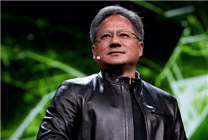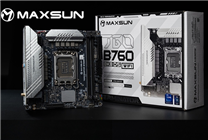Nvidia’s Ambitious Plans in the Chinese Market: A Look at the Future
In a striking revelation, Nvidia’s latest financial report indicated that Chinese manufacturers did not purchase the much-anticipated H20 chip in the recent fiscal quarter, leaving CEO Jensen Huang visibly concerned. The absence of orders for the H20 chip has raised eyebrows, particularly following allegations about potential backdoor risks. Despite multiple reassurances from Huang and Nvidia regarding the product’s security, skepticism remains, with no substantial evidence dispelling these concerns.
The Quest to Sell New Model Chips
In a recent interview, Huang expressed a strong desire to market Nvidia’s latest chips, designed on the advanced Blackwell architecture, to Chinese manufacturers. However, the success of this initiative hinges on two crucial factors: the approval of the U.S. government and the willingness of Chinese companies to purchase these offerings. Given the current backdrop of lingering doubts surrounding the H20, this situation poses a significant challenge.
Huang has often voiced that the U.S. government should permit Chinese AI developers to utilize Nvidia’s chips. He argues that restricting access to these advanced technologies will only impede the innovation and growth of the Chinese tech industry. “We haven’t seen the orders yet, but we remain hopeful,” Huang remarked during a press conference. He highlighted the H20 as an exceptional product, boasting remarkable cost-effectiveness and efficiency in generating AI tokens.
Potential for a Lucrative Market
Huang further emphasized China’s position as the world’s second-largest AI market. He estimates that the competitive launch of products in this landscape could present Nvidia with approximately $50 billion in business opportunities this year, projecting an annual growth rate of about 50%. This optimistic outlook reflects Huang’s belief in the vast potential within the Chinese market, if restrictions can be navigated effectively.
In candid discussions, Huang revealed that he is engaging with the Trump administration regarding the possibility of selling Nvidia’s powerful Blackwell chips to China. He posited that the global adoption of American technology plays a vital role in positioning the U.S. favorably in the escalating AI competition. While he remains optimistic about the negotiations, he noted the absence of a definitive timeline for reaching an agreement.
Navigating the Complex Landscape
While Huang’s aspirations are commendable, the reality appears to be more complex. He finds himself in a challenging position within a rapidly changing geopolitical landscape, where he lacks direct control over the decision-making processes that govern market access and international trade. This intricate web of regulations and negotiations adds layers of difficulty to his ambitions.
According to insiders in the supply chain, Nvidia is also developing a specialized AI chip, the B30, specifically tailored for the Chinese market. This new chip is reportedly designed to achieve around 80% of the performance metrics of Nvidia’s standard Blackwell GPUs, indicating a strategic pivot towards catering to local needs.
Conclusion
As Nvidia navigates the uncertain waters of international trade and technological competition, the stakes are exceptionally high. Huang’s vision for expanding into the Chinese market brings a blend of hope and complexity, underscoring the intricate relationship between technology and geopolitics.
Whether Huang’s efforts will bear fruit remains to be seen, but what is clear is the imperative for dialogue and innovation. The Chinese market holds immense promise for Nvidia, and overcoming barriers to access will be vital for unlocking this potential.
In sum, Nvidia’s future in China teeters on the brink of possibility, contingent on external approvals and internal market dynamics. As the global tech tableau continues to evolve, Huang’s leadership will be pivotal in shaping Nvidia’s strategy and fostering a competitive edge in the AI sector.








